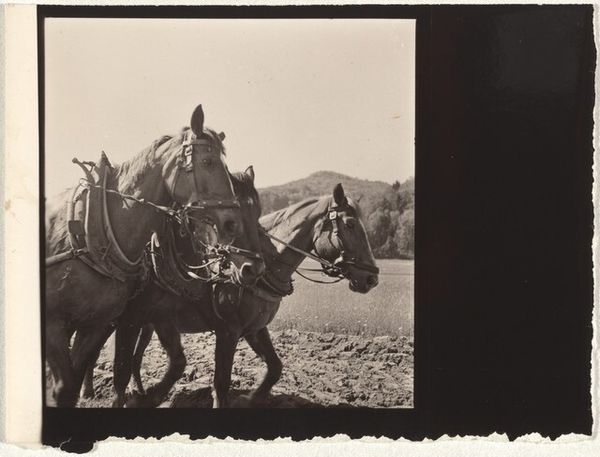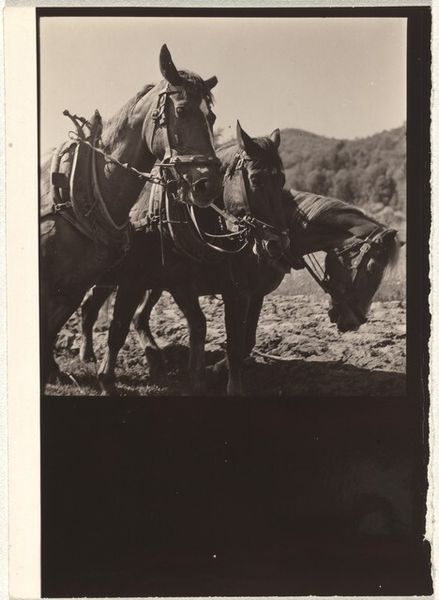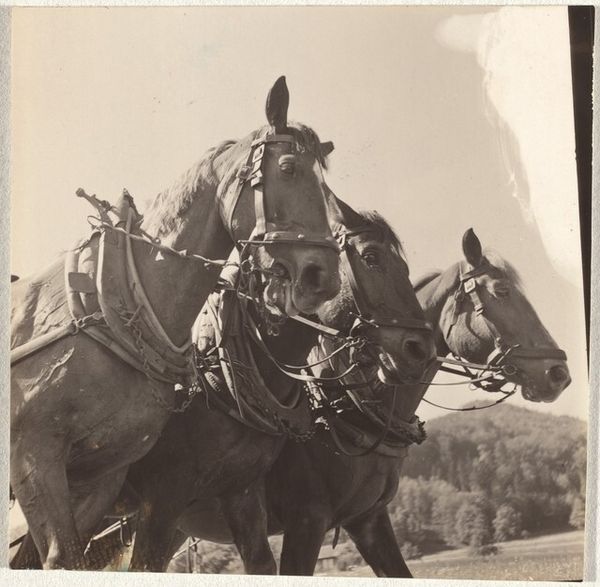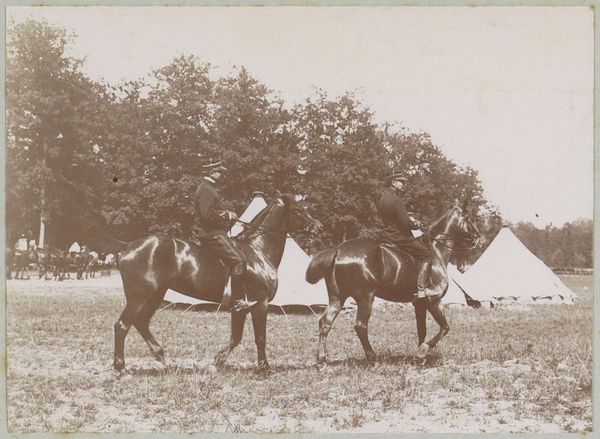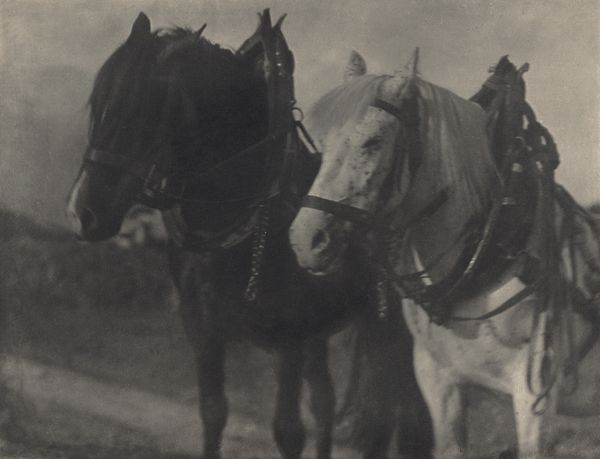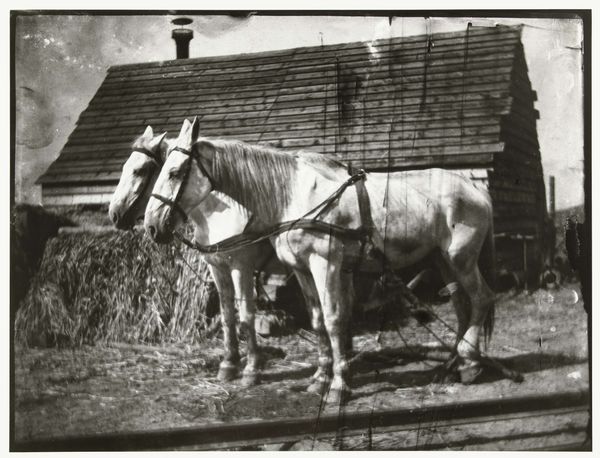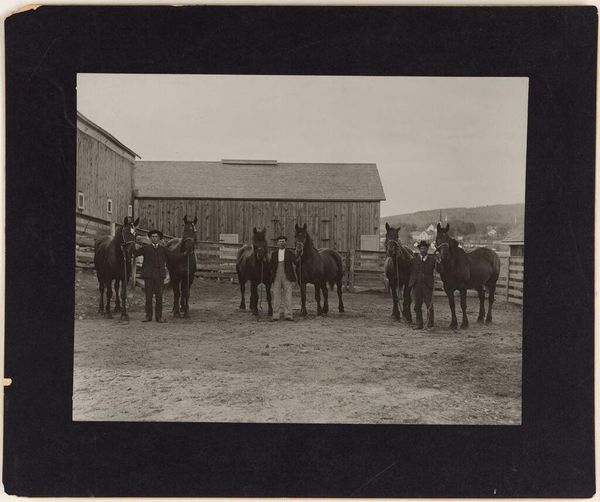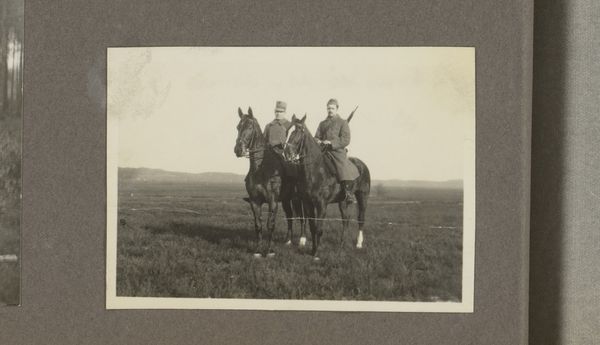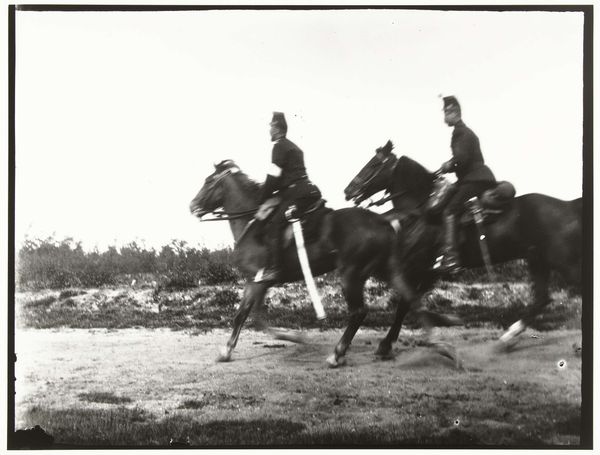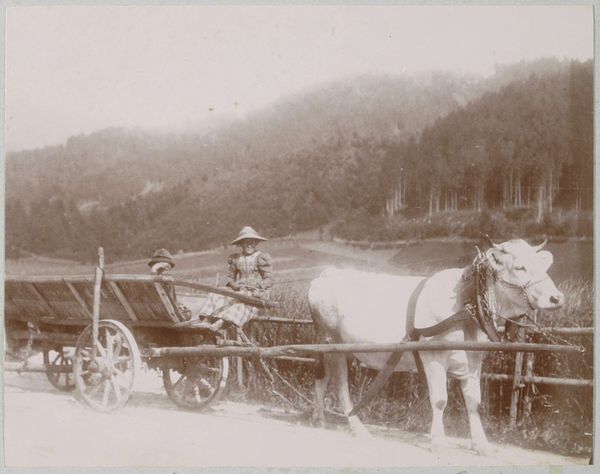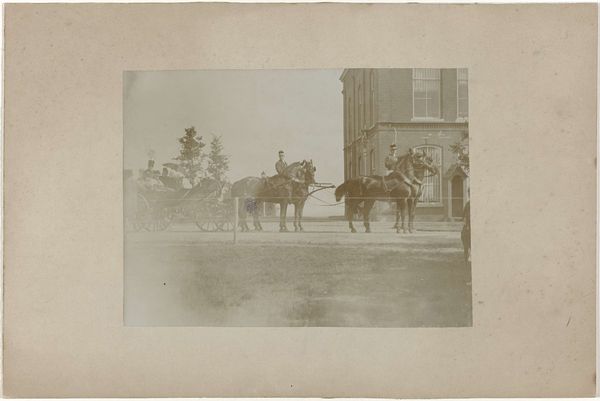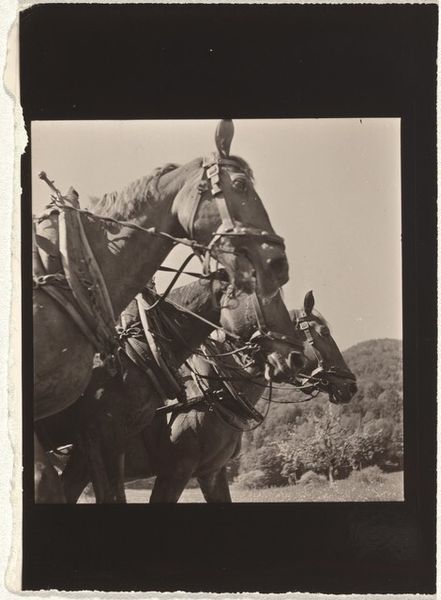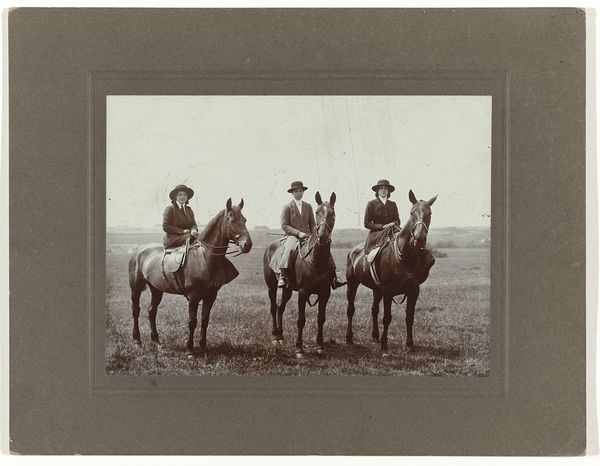
print, photography, gelatin-silver-print
#
portrait
# print
#
landscape
#
photography
#
historical photography
#
gelatin-silver-print
#
realism
Dimensions: image: 5.9 x 5.6 cm (2 5/16 x 2 3/16 in.) sheet: 6.5 x 8.9 cm (2 9/16 x 3 1/2 in.)
Copyright: National Gallery of Art: CC0 1.0
Editor: We're looking at Robert Frank's "Horses--Farming," a gelatin-silver print made between 1941 and 1945. The light is stark, highlighting the texture of the horses' coats and the freshly tilled field. I'm curious, what does this piece tell you about the lives of the animals, the land, and the farmers? Curator: What strikes me is the relationship of labor and materiality depicted in this image. We see these powerful animals harnessed, their muscles strained in the service of agriculture. The very texture of the gelatin-silver print – the process itself – reinforces the raw, unglamorized reality of farming. How do you think Frank’s choice of this medium affects our understanding? Editor: I guess it makes the scene feel very immediate and authentic, not idealized at all. Was he consciously choosing materials to make a statement? Curator: Absolutely. Consider the contrast with, say, a romantic painting of pastoral life. Here, the silver print's inherent qualities—its capacity for sharp detail, its monochrome palette—speak to a deliberate stripping away of artifice. He's forcing us to confront the means of agricultural production, the literal toil. These aren't majestic steeds; they're working animals. Can we also think about who this work was aimed at and who it leaves out? Editor: Good point, who would have had the privilege to view such photographs and contemplate the material conditions of labor in the 1940s? Curator: Precisely. The photograph, as a reproducible medium, opens avenues for distribution, potentially democratizing access to this representation of labor. But its circulation remains confined by the structures of power, by networks of patronage, artistic venues and economic circumstances that affect who gets to see it, critique it, or even relate to the image. Editor: That’s fascinating. I hadn’t considered how the material nature of the print itself contributes to the image's meaning and its role in a broader societal context. Curator: Seeing art through this lens—examining its materials, production, and reception—offers a rich and complex understanding that goes beyond aesthetic appreciation. This approach helps us understand its inherent social implications.
Comments
No comments
Be the first to comment and join the conversation on the ultimate creative platform.
